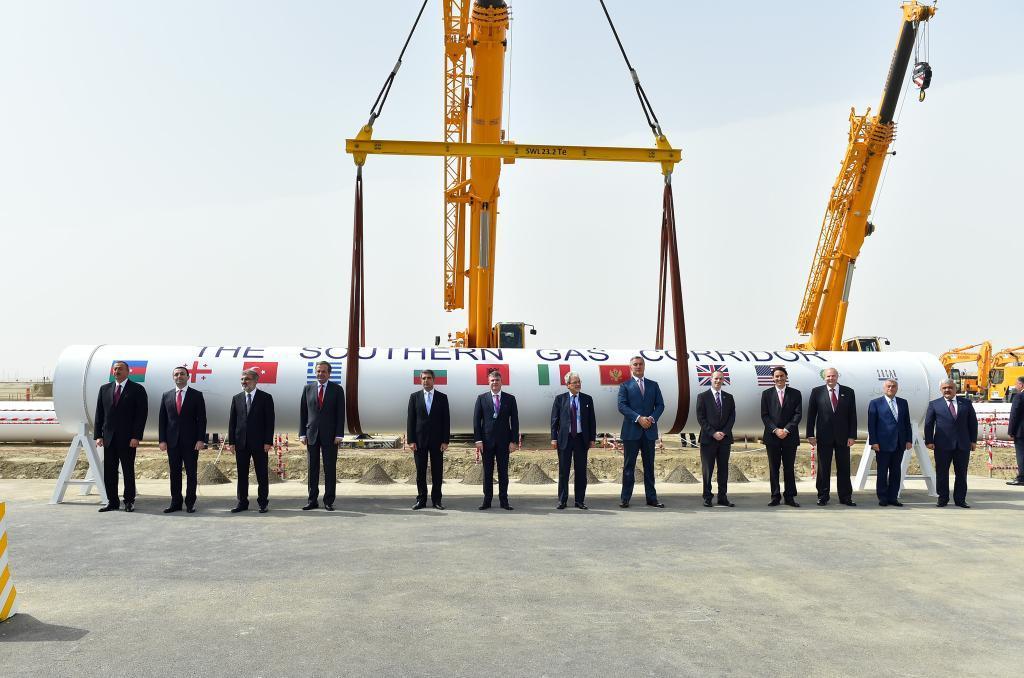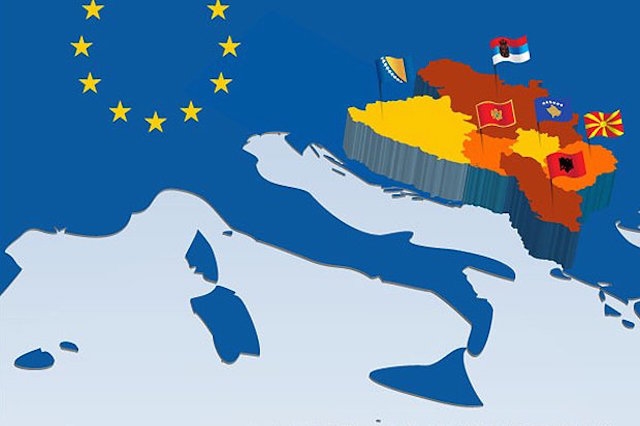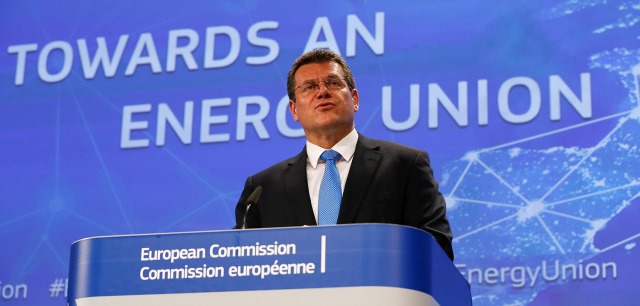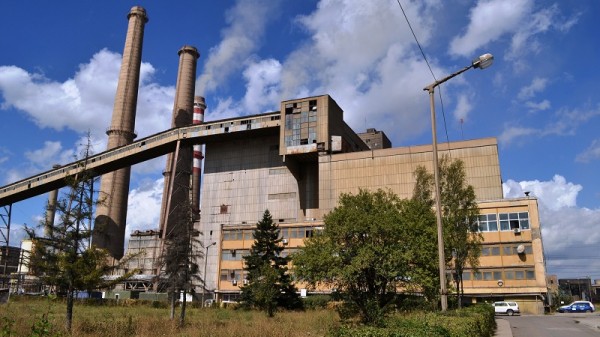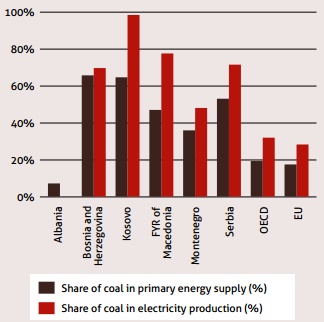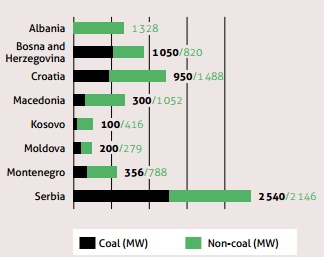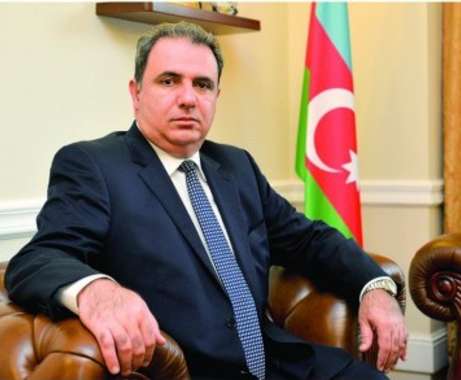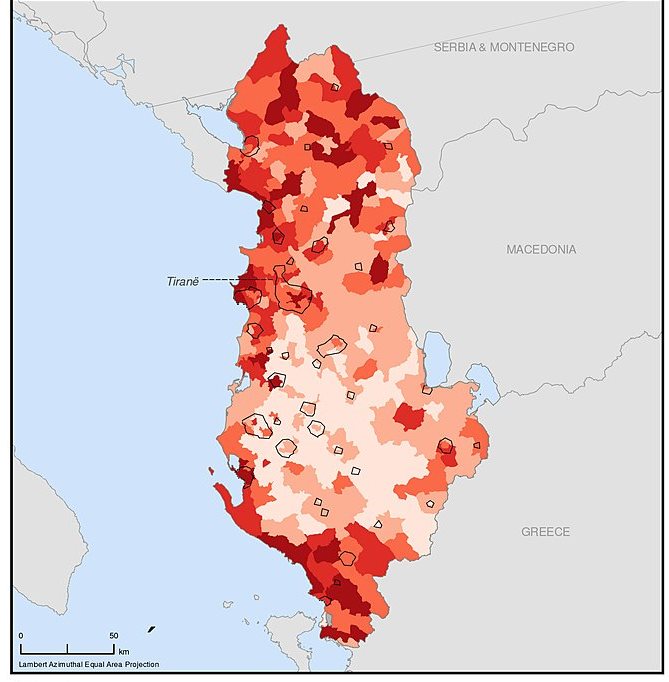
Climate change Albania
The climate of Albania
Albania has a typically Mediterranean climate characterised by mild winters with abundant precipitation and hot, dry summers. The annual mean air temperature varies widely over the territory from 7°C over the highest zones up to 15°C in the coastal zone. In the south west, temperatures reach up to 16°C. In the lowland, an almost stable distribution of annual mean temperature (between 12 and 14°C) can be observed. The lowest recorded temperature was -25.8°C and the highest 43.9°C (2).
Total mean annual precipitation over Albania is about 1,485 mm per year. The southeast part of the country receives smaller amounts of precipitation (an annual value of up to 600 mm). The highest precipitation total is recorded in the Albanian Alps, where values reach as much as 2,800 to 3,000 mm per year. Another area with abundant rainfall is the mountainous southwest zone, where total precipitation is up to 2,200 mm. Precipitation levels follow a clear annual pattern, with the maximum in winter and the minimum in summer (2).
Air temperature changes until now
In the eastern Mediterranean, the intensity, length and number of heat waves have increased by a factor of six to eight since the 1960s (7).
Precipitation changes until now
Albania belongs to the subtropical Mediterranean climate. It is characterized by mild winters with abundant precipitation and hot, dry summers. The mean annual precipitation total over Albania is about 1,485 mm/year. The highest precipitation total (70%) is recorded during the cold months (October – March). The richest month in precipitation over the whole territory is November, while the poorest are July and August. The number of rainy days (>1.0 mm) per year varies from 80-120 days/year (1).
The southeast part of country receives the smaller amount of precipitation (annual value reach up to 600 mm/year), followed by the Myzeqeja field, that receives about 1,000 mm/year. The highest precipitation total is recorded in the Albanian Alps, whereas the values reach up to 2,800-3,000 mm/year. Another center with abundant rainfall is also the mountainous southwest zone, with a precipitation total up to 2,200 mm/year (1).
Generally, the annual precipitation total shows a slight decreasing trend, mainly due to less precipitation during winter and spring. An exception from this general trend makes autumn, where coastal stations (Shkodra and Vlora) indicates positive trend of precipitation. While Tirana, Korça and Kukesi stations display a very light decreasing trend (1).
Air temperature changes in the 21st century
The climate change scenarios for Albania project an annual increase in temperature up to 1°C, 1.8°C, 3.6°C respectively by 2025, 2050 and 2100 (1). The seasonal temperature and precipitation changes suggest changes towards milder winters, warmer springs, drier autumns, drier and hotter summers. The projected ranges of temperature increase for all seasons are (3):
| Season | Increase 2025 | Increase 2050 | Increase 2100 |
| Annual | 0.8 – 1.1°C | 1.7 – 2.3°C | 2.9 – 5.3°C |
| Winter | 0.7 – 0.9°C | 1.5 – 1.9°C | 2.4 – 4.5°C |
| Spring | 0.7 – 0.9°C | 1.4 – 1.8°C | 2.3 – 4.2°C |
| Summer | 1.2 – 1.5°C | 2.4 – 3.1°C | 4.0 – 7.3°C |
| Autumn | 0.8 – 1.1°C | 1.7 – 2.2°C | 2.9 – 5.2°C |
Likely changes in other climatic parameters are (3):
- a higher increase of daily minimum temperatures than maximum temperatures;
- a decrease in the number of frost days (with temperatures of ≤-5°C) in high altitudes of four to five days, nine days and 15 days by 2025, 2050 and 2100 respectively;
- an increase in the frequency and intensity of heat waves. The number of days with a temperature of ≥35°C is likely to rise by one to two days by 2025, and by three to four days by 2050 compared to the 1951 to 2000 average. By 2100, the expected increase is between five and six days in mountainous areas and up to eight days in lowland areas;
Eastern Mediterranean and the Middle East (EMME)
For the Eastern Mediterranean and the Middle East an analysis was carried out of long-term meteorological datasets (period 1901-2006) along with regional climate model projections for the 21st century (SRES scenario A1B) (4). The results suggest a continual, gradual and relatively strong warming of the area of about 1-3°C in the near-future (2010–2039), to 3–5°C in the mid-century period (2040–2069) and 3.5–7°C by the end of the century (2070–2099). Daytime maximum temperatures appear to increase most rapidly in the northern part of the region, i.e. the Balkan Peninsula and Turkey. Maximum day time temperature increases more strongly than mean night time minimum temperature (8).
Extremely high summer temperatures are projected to become the norm by 2070–2099; the coolest summers at the end-of-century may be warmer than the hottest ones in the recent past. As an example, the hottest summer on record in Athens in 2007 would be among the 5% coolest ones by the end of the century (4,8). The relatively strong upward trend in the northern parts of the Eastern Mediterranean and the Middle East indicates a continuation of the increasing intensity and duration of heat waves observed in this region since 1960 (5). According to regional climate model results based on the IPCC SRES scenarios A1B, A2 and B2, the number of heat wave days, here defined as days with maximum temperatures exceeding the local 90th percentile of the reference period (1961–1990), typically increases by a factor of 4–10 by the middle and 7–15 by the end of the century, with the strongest increases in the Middle East (8).
Current and future daytime mean temperature trends in the Eastern Mediterranean and the Middle East typically vary from 0.28° to 0.46°C per decade. The largest increases appear in some continental locations such as Belgrade, Sofia, Ankara, Baghdad and Riyadh with trends in excess of 0.4°C/decade. The same analysis was performed for daytime maximum and night-time minimum temperature; for daytime maximum temperature the largest upward trends are calculated for Belgrade, Sofia, Tirana and Ankara with 0.48°, 0.46°, 0.45° and 0.44°C per decade, respectively. For night-time minimum temperature, large positive trends exceeding 0.40°C/decade are derived for Belgrade, Riyadh, Baghdad, Athens, Sofia and Ankara (4,8).
A1B scenario results suggest that by the end of the century, the frequency of very hot days (maximum day time temperature >35°C) may increase up to 1–2 weeks per year in mountainous parts of the northern EMME and by about a month in much of the rest of the region. The frequency of ‘‘tropical’’ nights (mean night time minimum temperature > 25°C) also increases strongly, by nearly a month per year in the Balkans and coastal areas, and more than two months in the Gulf region, exacerbating the daytime heat stress. By the end of the century in most cities, the coolest summers may be warmer than the hottest ones today (8).
Precipitation changes in the 21st century
The climate change scenarios for Albania project an annual decrease in precipitation up to -3.8%, -6.1%, -12.5% respectively by 2025, 2050 and 2100 (1). The seasonal temperature and precipitation changes suggest changes towards milder winters, warmer springs, drier autumns, drier and hotter summers. The projected ranges of changes in precipitation for all seasons are (3):
| Season | Change 2025 | Change 2050 | Change 2100 |
| Annual | -3.4 to -2.6% | -6.9 to -5.3% | -16.2 to -8.8% |
| Winter | -1.8 to -1.3% | -3.6 to -2.8% | -8.4 to -4.6% |
| Spring | -1.2 to -0.9% | -2.5 to -1.9% | -5.8 to -3.2% |
| Summer | -11.5 to -8.7% | -23.2 to -17.8% | -54.1 to -29.5% |
| Autumn | -3.0 to -2.3% | -6.1 to -4.7% | -14.2 to -7.7% |
By 2050, the lowest value of annual precipitation total (about 570 mm) is expected to be registered in the southeast of the country, followed by Myzeqeja zone located in the west, with 950 mm, the southwest area with 2,100 mm. The highest value, about 2,650-2,850 mm, is expected to be registered again over the Alpine zones. The same distribution is likely expected by 2100 (1).
Likely changes in other climatic parameters are (3):
- an increase of droughts (number and duration) during the summers due to higher temperatures and potential evaporation that is not balanced by precipitation;
- in winter more precipitation in the form of rain rather than snow;
- an increase in episodes of intensive rain. The number of days with heavy precipitation (24 hours maximum) compared to the 1951 to 2000 average is likely to increase by one to two days by 2025, by two to three days by 2050, and by three to five days by 2100.
Eastern Mediterranean and the Middle East
From the analysis of long-term meteorological datasets (period 1901-2006) along with regional climate model projections for the 21st century (SRES scenario A1B) a decline of annual precipitation is projected of 5–25% in 2040–2069 and 5–30% in 2070–2099 relative to the reference period 1961–1990 (4,8). The decreases will be particularly large (>15%) in Cyprus, Greece, Israel, Jordan, Lebanon, the Palestine territories and Syria. As a result of precipitation decrease, and also due to population growth rates, the per capita available internal water resources may decline strongly, for example by 50% or more by mid-century in Cyprus (9).
In the Balkans, Turkey, Cyprus, Lebanon and Israel, the number of rainy days may decrease, e.g. by 5–15 days at mid-century and by 10–20 days per year at the end-of-century (4). This appears to be a continuation of a trend observed in Greece since about 1960 (6).
The intensity of precipitation (maximum amount of rain per day) is expected to decrease except over the northern Balkans and the Caucasus (4).
References
The references below are cited in full in a separate map ‘References’. Please click here if you are looking for the full references for Albania.
- Republic of Albania, Ministry of Environment (2002)
- Diku (2011)
- Republic of Albania, Ministry of Environment (2009), in: Diku (2011)
- Lelieveld et al. (2012)
- Kuglitsch et al. (2010), in: Lelieveld et al. (2012)
- Nastos and Zerefos 2009, in: Lelieveld et al. (2012)
- Kuglitsch et al. (2010), in: Coumou and Rahmstorf (2012)
- Lelieveld et al. (2013)
- Chenoweth et al. (2011), in: Lelieveld et al. (2013)


